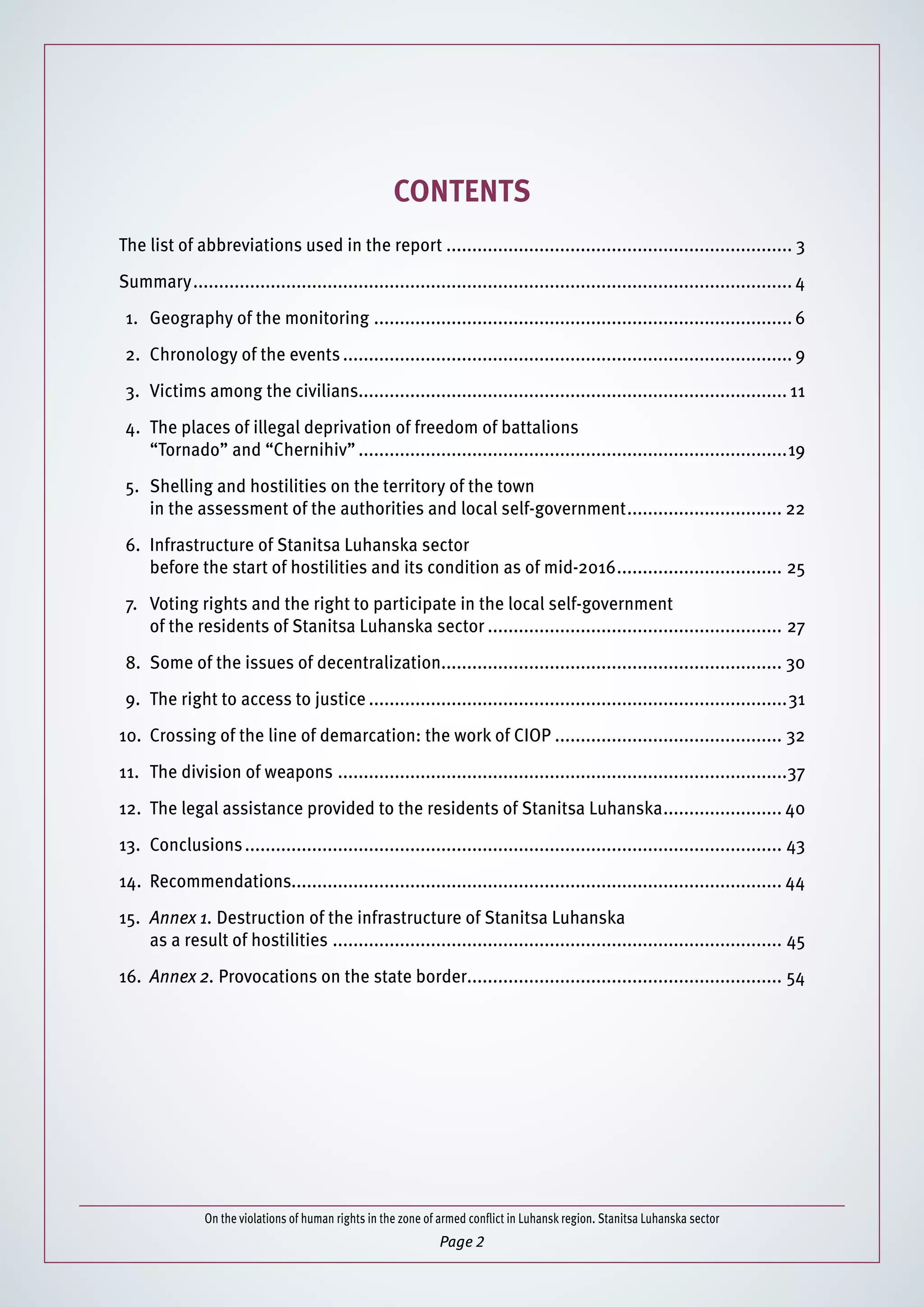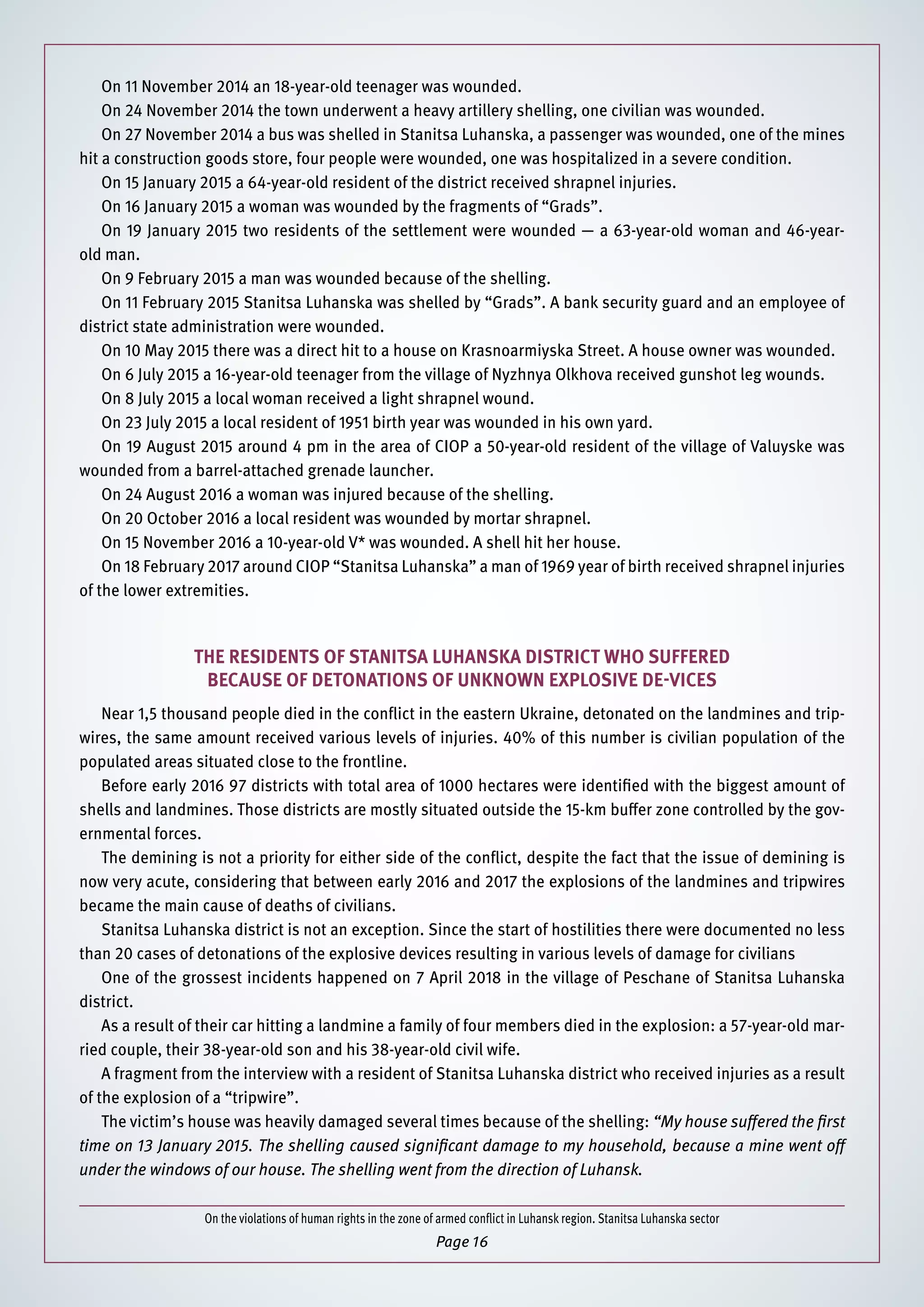The report analyzes human rights violations in the conflict zone of Luhansk region, particularly in Stanitsa Luhanska, documenting monitoring visits which revealed serious abuses such as torture, murder, and illegal detentions since the armed conflict began in 2014. The situation has led to significant civilian casualties and property destruction, with limited responses from law enforcement and local authorities regarding investigations or reparations for victims. Recommendations are provided to improve human rights practices and address the ongoing issues faced by residents in the affected areas.































































